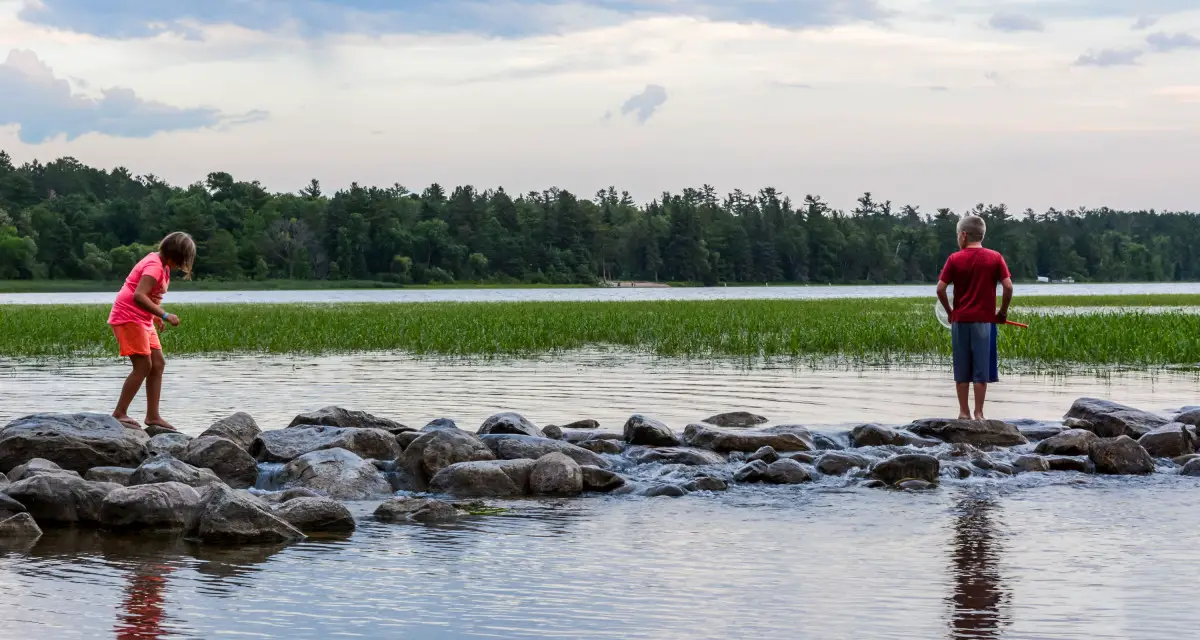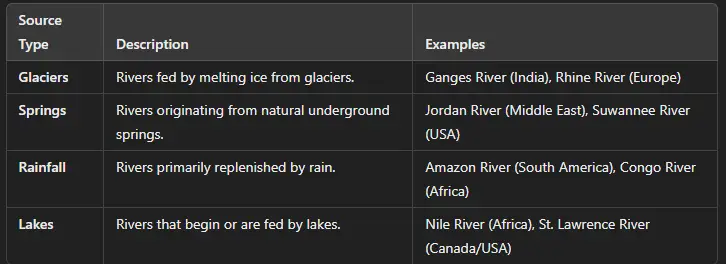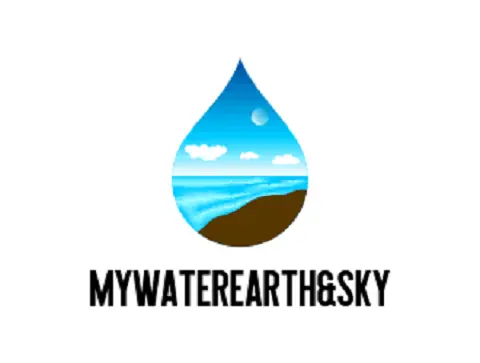The source of a river is a fundamental element in the hydrological cycle, acting as the beginning where water flows downstream to create rivers, lakes, and ultimately, oceans. These sources, which can be glaciers, springs, rainfall, or lakes, are vital not only for the river’s health but also for the ecosystems, agriculture, and communities that depend on them. What is the Start of a River Called?
The start of a river is called its source. This is the location where the river begins, which can be a spring, glacier, lake, or other water body. The source is crucial as it provides the initial flow of water that feeds the river and shapes its journey downstream, influencing ecosystems and communities along the way.
Understanding the characteristics and importance of river sources is crucial for effective water management and conservation efforts, especially in an era of increasing environmental challenges and water scarcity.
Introduction:
The beginning of a river, often called its source, marks the origin of one of nature’s most essential and dynamic systems. From small trickles in the mountains to mighty flows fed by glaciers or springs, rivers start their journey at higher elevations, carving paths through landscapes and nurturing ecosystems as they go. Understanding what the start of a river is called and how it forms offers insight into the life-giving power of rivers and their role in shaping the natural world. Whether through melting snow, rainfall, or underground springs, a river’s source is where it all begins.

What Is the Start of a River Called
The start of a river is called the “source” or “headwaters.” It is the point where a river begins, typically originating from a spring, glacier, rainfall, or natural lake. The source is often located in highland or mountainous areas, and from there, the river flows downhill, gradually increasing in size as it collects water from tributaries along the way.
Types of River Sources
Rivers originate from various sources, typically fed by natural processes that provide the initial flow of water. The primary types of river sources include glaciers, springs, rainfall, and lakes. Each of these sources plays a unique role in shaping the river’s flow and behavior.
- Glaciers: As ice masses melt, they release water that feeds rivers. This is common in mountain ranges, where glacier-fed rivers often maintain consistent flow throughout the year.
- Springs: Underground water can reach the surface through natural springs, becoming a continuous source for rivers, particularly in limestone or volcanic areas.
- Rainfall: Some rivers are heavily reliant on rainfall, with their flow peaking during rainy seasons and decreasing during dry periods.
- Lakes: Large lakes often act as reservoirs for rivers, controlling the flow and ensuring a steady water supply.
Each type of river source significantly influences the flow patterns, volume, and behavior of the river, contributing to diverse ecosystems and water availability along its course.
Characteristics of the River Source

River sources exhibit distinct characteristics that influence the river’s flow, volume, and surrounding environment. These characteristics depend on the type of source—whether it originates from glaciers, springs, rainfall, or lakes. Each source type affects the river’s seasonal flow patterns, water clarity, temperature, and consistency.
- Glacier-fed Rivers: Known for their cold, clear water, these rivers often have a consistent flow year-round, as they are fed by the slow melting of glaciers. However, during warmer seasons, flow rates can increase due to accelerated melting.
- Spring-fed Rivers: These rivers have a steady, reliable flow due to the constant supply of groundwater. Spring water tends to be cool and clear, supporting unique ecosystems.
- Rain-fed Rivers: Rainfall-dependent rivers experience fluctuating water levels, with high flow during rainy seasons and reduced flow during dry periods. These rivers can be prone to flooding or droughts, depending on seasonal weather patterns.
- Lake-fed Rivers: These rivers benefit from the consistent outflow of water from lakes, providing a steady and controlled source. Lake-fed rivers often have more stable flow rates and can act as key sources for irrigation and human consumption.
Each type of river source shapes the river’s behavior, influencing its ecological impact and use in human activities.
Why Is the River Source Important
The river source is crucial because it determines the river’s flow, water quality, and ecological health. It supplies the initial water that feeds the entire river system, impacting downstream environments, agriculture, and human settlements.
A reliable river source, whether from glaciers, springs, rainfall, or lakes, ensures a consistent water supply, which supports biodiversity, provides habitats for aquatic and terrestrial species and maintains vital ecosystems. Moreover, the source influences water availability for human use, including drinking water, irrigation, and industry, making it a key factor in sustaining both natural and human-made environments. Protecting river sources is essential for preserving the overall health of the river and its surrounding communities.

Famous River Sources
Some of the most well-known river sources include:
Conclusion:
In conclusion, the source of a river is not just the beginning of its physical journey, but also the foundation of the ecosystems, landscapes, and human communities it will support along the way. Whether originating from springs, rainfall, melting glaciers, or lakes, the start of a river plays a crucial role in defining the river’s path, volume, and the life it sustains. By understanding the significance of a river’s source, we can better appreciate the intricate processes that shape our natural environment and the vital importance of protecting these waterways from their very beginning.
References:
FACT.NET-Famous Rivers Around The World
FAQ’s
- What is a river source?
A river source is the original point from which a river begins. It can be a spring, glacier, lake, or rainfall that feeds the river and starts its journey downstream. - How are river sources identified?
River sources are typically located in highlands, mountains, or areas with abundant water supply. The exact point is often the furthest place from where the river ends that still contributes water to it. - Can a river have multiple sources?
Yes, some rivers can have multiple sources, particularly in systems where streams and tributaries converge. For example, the Nile has several sources, including Lake Victoria and other feeder streams. - Why is the river source important for the environment?
The source of a river provides the initial water that sustains the river’s flow, supporting ecosystems, wildlife, agriculture, and human needs. Protecting the source ensures the health and sustainability of the entire river system. - Do all rivers originate from glaciers?
No, not all rivers originate from glaciers. Rivers can start from a variety of sources, including springs, rainfall, and lakes, depending on the geographic region. - What happens if a river source dries up?
If a river source dries up, the river’s flow diminishes or ceases entirely. This can have severe consequences for ecosystems, wildlife, and human populations that rely on the river for water. - What are the most common types of river sources?
The most common types of river sources include glaciers, springs, lakes, and areas of high rainfall. Each source type influences the river’s flow, volume, and seasonal changes. - Can human activities affect river sources?
Yes, human activities like deforestation, pollution, and over-extraction of water can negatively impact river sources, leading to reduced flow, contamination, or drying up of the source. - What is the longest river source in the world?
The Nile River, with its primary source in Lake Victoria, is considered the longest river source in the world. However, some sources are glacier-fed or arise from tributaries farther upstream. - How can we protect river sources?
River sources can be protected by preserving natural landscapes, preventing pollution, regulating water extraction, and managing land use responsibly to ensure the health of the river ecosystem.



